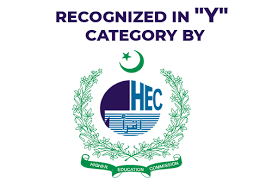Islamic Financing Portfolio and its Comparative Growth Potential
Abstract
 Abstract Views: 725
Abstract Views: 725
Background – Growth has a strong association with financial sector development. As both micro and macro projects significantly count institutionalized financing contented to the access of finance and help to reduce the cost. Islamic finance development incorporates several benefits such as the transformation of the economy towards the Shari’ah compliancy, higher degree of risk-sharing, and integration of returns with the risk/performance associated with the investment venture thus ultimately leading to social prosperity.
Objectives - This study envisages the exploration of the contribution of different type of Islamic banking financing which Islamic Banks are utilizing in their capital structure, on the economic growth. This assessment may help in empirically identifying the financing which has been fruitful to promote growth. This is because each of these Islamic financing products has their essence in the path of growth.
Design/methodology/approach - Gross Domestic Product (GDP) is taken as the dependent variable. And the Solow model based controlling variables includes Labor Resource (L), and Physical Capital (K) while the base variable are the financing modes. The quarterly data is collected for 9 countries which are available between 2014Q1 and 2017Q4.
Findings – The results indicate that other than Istisna financing, all other financings have a positive effect on economic growth, whereas Salam financing has highest growth potency.
Originality/value – Previous studies lack in providing a country-level comparison of growth effect of country-level Islamic capital structure. While, considering financing as an input of economic growth within a panel data setup. This study is finding growth based weights on the popular Islamic financing options, which policymakers can use to find a particular financing which needs promoting in order to boost economic growth.
Downloads
Copyright (c) 2020 Noman Arshed, Sadia Yasmin, Muhammad Gulzar

This work is licensed under a Creative Commons Attribution 4.0 International License.
Authors retain copyright and grant the journal right of first publication with the work simultaneously licensed under a Creative Commons Attribution (CC-BY) 4.0 License that allows others to share the work with an acknowledgement of the work’s authorship and initial publication in this journal.












